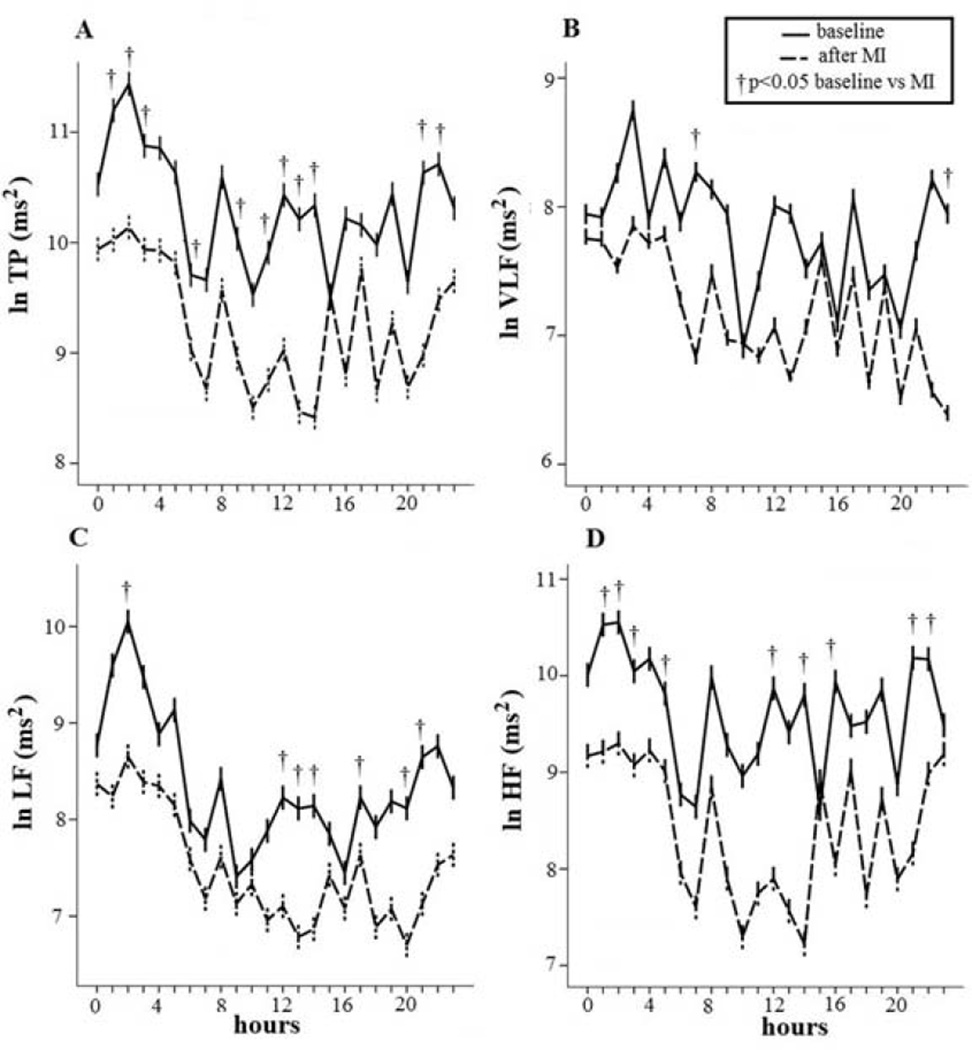Figure 5.
Significant reduction in all spectral components seven weeks after myocardial infarction (MI): total power (TP) (A), very-low frequency (VLF) (B), low frequency (LF) (C) and high-frequency (HF) (D) power. The spectral RR component behaved in an opposite manner to myocardial repolarization dispersion, being higher at night and lower during the daytime.
TP baseline (A): m= 10.4, amp= 0.5, ac: 2:00, th: 15:00; p= 0.005. TP after MI (A): m= 10.4, am= 0.5, ac: 2:00, th: 14:00; p= 0.0004.
VLF power baseline (B): m= 7.8, amp= 0.4, acr: 3:00, th: 20:00; p= 0.016. VLF power after MI (B): m= 7.3, amp= 0.4, ac: 7:00, th: 23:00; p: 0.023;
LF power baseline (C): m= 8.4, amp= 0.8, ac: 2:00, th: 9:00; p= 0.0002. LF power after MI (C): m= 7.9, amp= 0.6, ac: 2:00, th: 20:00; p= 0.0001.
HF power (D) showed a significant circadian behavior only after MI (HF power after MI: m= 8.5, amp= 0.8, ac: 2:00, th: 14:00; p= 0.0001).

